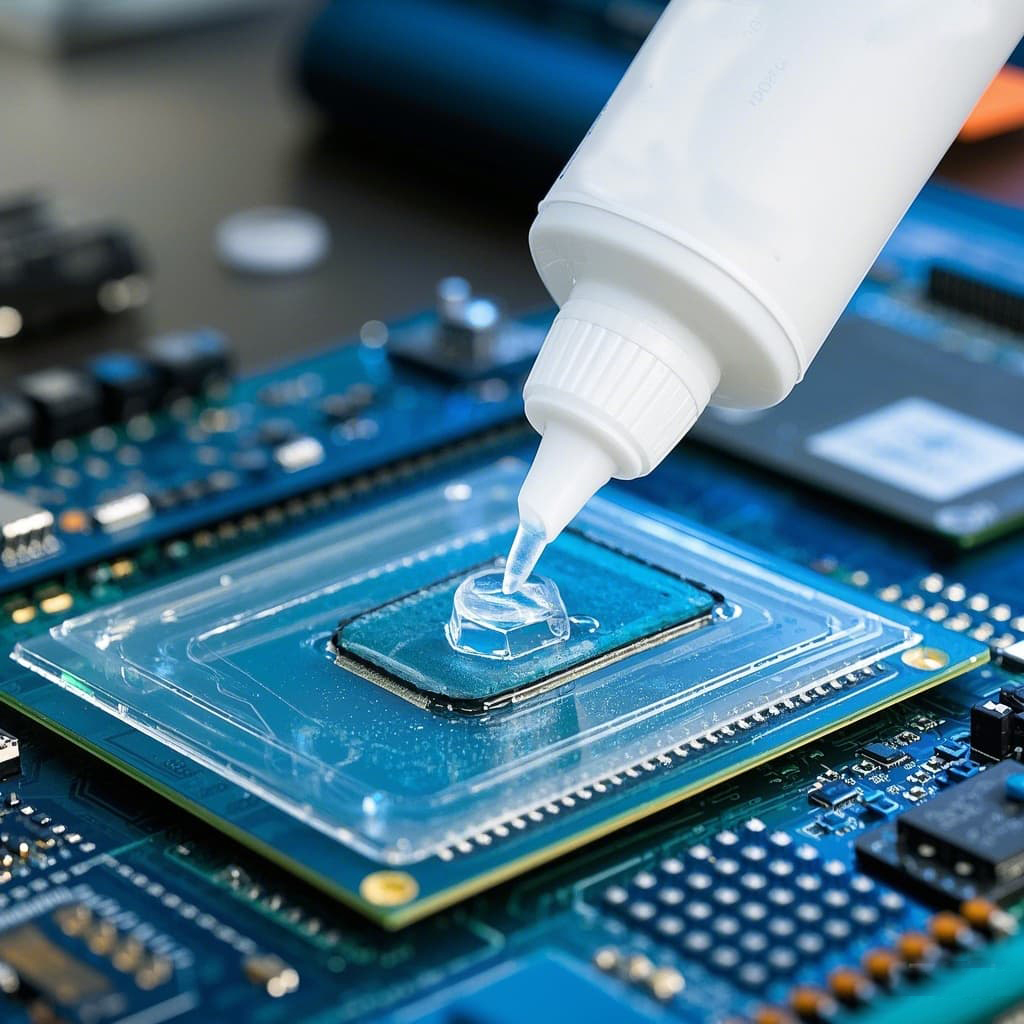


PCB circuit boards play a vital role in modern electronic devices. To ensure the structural stability and performance of these boards, choosing the right adhesive is critical. In this article, we will explore the adhesives commonly used on PCBs to help you understand how to choose the right type of adhesive for different applications.

1. Conductive Adhesives: Ensuring Electrical Connections
Conductive adhesives are commonly used to connect electrical components on PCBs. They are indispensable not only for their mechanical strength, but also for ensuring the passage of electrical current. Common components of conductive adhesives include silver, copper and other metal particles. Due to their good electrical conductivity, these adhesives are widely used in radios, communication equipment, and high-frequency circuits.
Applications of conductive adhesives:
Conductive connection of high frequency circuits.
Fixing and conductive contact of electronic components.
Suitable for small electronic components welding alternative.
2. Non-conductive adhesives: protection of circuits from interference
Unlike conductive adhesives, non-conductive adhesives in the application of non-conductive current, can effectively avoid electrical short circuits. They are commonly used to protect PCB circuit boards from external factors, especially to prevent electrostatic discharge (ESD) on sensitive components causing damage.
Application of non-conductive adhesives:
Used to secure sensitive components.
As an insulating layer to prevent current from passing through undesired paths.
For electronic components requiring high heat resistance.
3. Heat-curing adhesives: Stable at high temperatures
Heat-curing adhesives undergo a chemical change during the heat curing process, which allows them to maintain excellent performance in high-temperature environments. These adhesives are characterized by high temperature resistance and chemical resistance and are commonly used in PCB circuit board applications in high temperature environments.
Heat curing adhesive applications:
Component fixing under high temperature conditions.
PCB circuit board encapsulation and protection.
Used in aerospace and automotive electronics where materials are required to withstand extreme temperatures.
4. UV curing adhesives: fast curing, efficient production
UV-curable adhesives are a class of adhesives cured by ultraviolet (UV) radiation. These adhesives cure quickly and are therefore ideal for rapid production requirements, especially in the production of large electronic products. They have the advantage of high performance and short curing times and are suitable for automated production lines.
Applications for UV-curable adhesives:
For fast bonding of PCB circuit board components.
High speed production line applications to save production time.
For precision encapsulation of electronic equipment.
5. Two-component adhesives: strong bonding and high strength
Two-component adhesives consist of two parts, usually including the base gel and hardener. By mixing these two parts, a strong bonding effect is formed. They have excellent tensile strength and durability and are widely used for bonding and encapsulation of PCBs.
Two-component adhesive applications:
For PCB circuit board bonding with high strength requirements.
Applications requiring high tensile strength and durability.
Repair and reinforcement of PCB circuit boards.
6. Structural adhesives: enhance the physical strength of the PCB
Structural adhesives are adhesives used to enhance the overall physical strength of PCB circuit boards. They provide excellent shear strength and are particularly suitable for boards that require a high degree of mechanical strength and stability.
Applications for structural adhesives:
Used to reinforce the connection of circuit boards to other components.
For vibration- and shock-resistant electronic equipment.
Provide additional protection against component damage.
How to choose the right adhesive?
When selecting an adhesive for use on a PCB circuit board, it is critical to consider the following factors:
Application environment: Determine the environment in which the circuit board will be applied and whether properties such as resistance to high temperatures and chemical corrosion are required.
Mechanical performance requirements: according to the structure of the PCB and functional requirements to select the appropriate strength of the adhesive.
Curing method: choose heat curing, UV curing and other different curing methods of adhesives to ensure production efficiency and quality.
Conductivity requirements: according to whether the need for electrical connections to select conductive or non-conductive adhesive.
Conclusion
In short, in the production and use of PCB circuit boards, the choice of the right adhesive to improve the reliability and stability of electronic products is critical. From conductive adhesives to structural adhesives, each adhesive has its own unique properties and application areas. Understanding the characteristics and uses of various adhesives can help engineers make the best choice to ensure the efficient operation and long-term stability of PCB circuit boards.
Email to this supplier